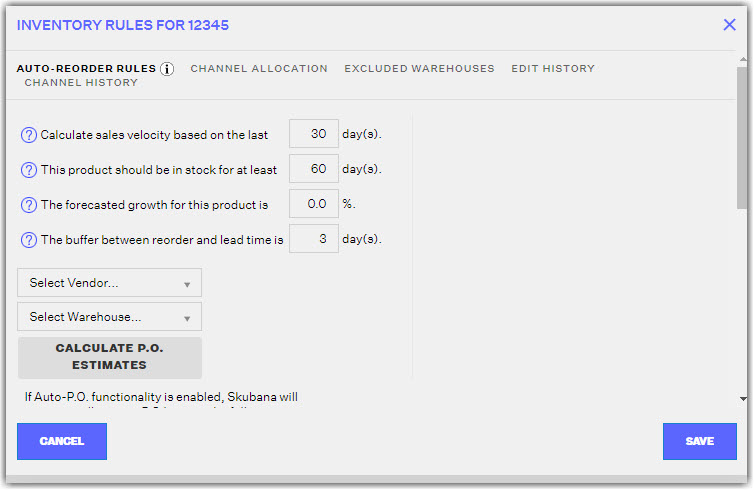Inventory Module Overview
1.1 min read
|Extensiv Order Manager's Inventory module makes it easy to track your inventory, regardless of physical location, sales channel, or inventory status. The Inventory module allows you to:
- Manage Inventory at a SKU level
- Know at a glance the status of inventory levels in your warehouses (the number of stock on hand, locked, in-transit, and allocated)
- Configure Stock Locations within In-House Warehouses
- Add, remove and adjust stock
- Search stock levels by SKU, product name, and more
- Review historical records of your inventory count and value
- Transfer stock from one location to another
- Configure auto-reorder rules at a SKU level
- Assign draw ranks for your locations, allowing you to set rules on what inventory should be used to fulfill orders first or when a location runs out of stock
- Configure minimum inventory levels
- Set allocation rules for your core products and bundles/kits
- Exclude inventory in specific warehouses from pushing to a sales channel, where necessary
- Bulk import inventory, stock minimums, and reorder rules
- Export inventory
- Keep track of manual inventory changes through discrepancies
- Deactivate stock to prevent them from showing in your listing
- Generate reports on your inventory
- Download copies of your inventory records for printing
- View transaction logs for your inventory records
- When you access the Inventory module, you'll see the details of your inventory on the left. Clicking on a line item, except on the master SKU hyperlink, will display the Stock Details per warehouse on the right. Clicking on the master SKU hyperlink will display the inventory settings for that SKU, including its Auto-Reorder Rules, Channel Allocation, Excluded Warehouses, Edit History, and Channel History. Additionally, you can calculate PO estimates. The estimates will allow you to review sales velocity, minimum stock level, reorder quantity, and reorder and runout dates of your stock based on the rules set by the auto-reorder rules functionality.


For more information on Inventory Value Reconciliation, click here.
